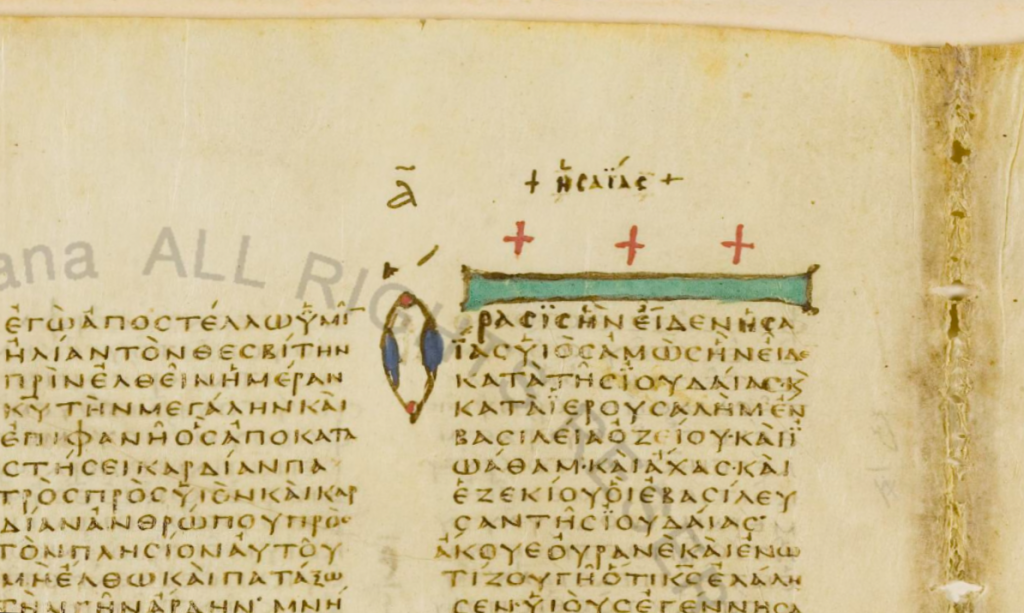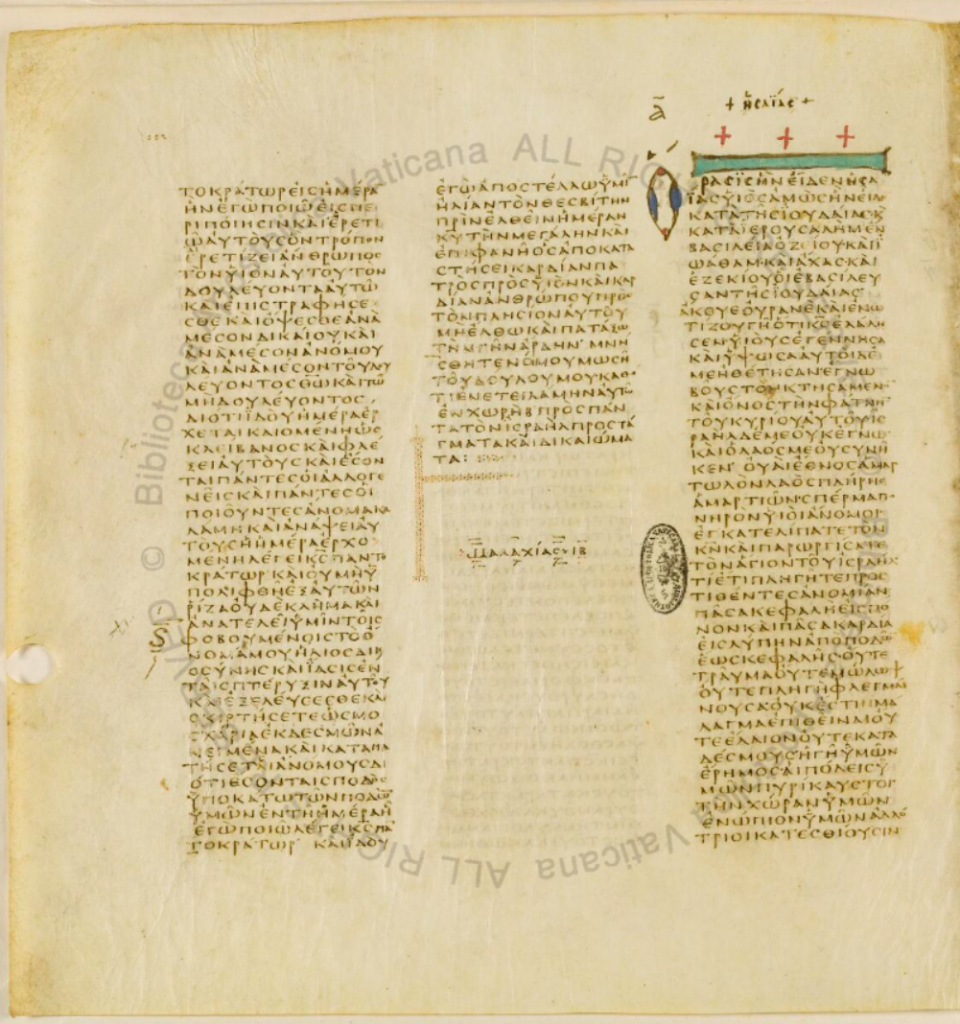This is an examination of the popular Christian biblical canon of scriptures, and the manuscripts thereof. This is not an interpretation of what the Bible means. I made it personal in Part 1 to give you some context of where I’m coming from. Here, in Part 2, we’ll start with the Old Testament to start answering, “What is the Bible?” My goal is the give you the tools through a field called “textual criticism” to answer that question for yourself. Hopefully the included “Biblical canon manuscripts.xlsx” spreadsheet will help you with that answer. I’m packing a lot of nerdy terms into this post that are easily Googleable, or found on Wikipedia, but the synthesis of those terms and ideas is my own. Continue to Part 3 for the conclusion.
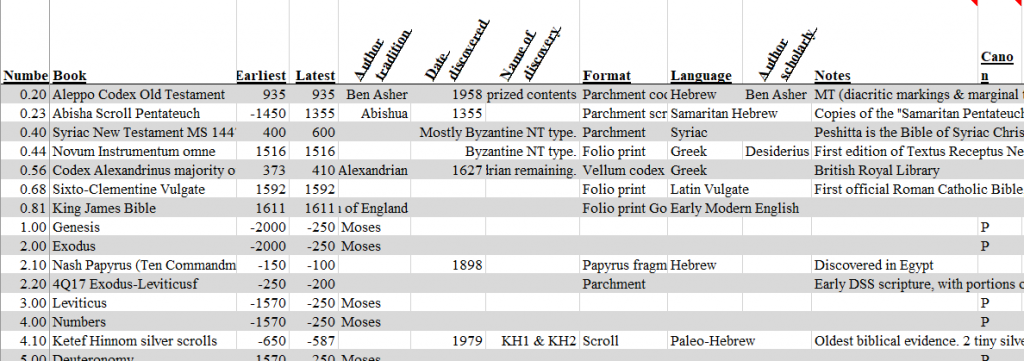
To keep me from biting off more than I can chew, I’ve limited this to books of the “Old” (Jewish “Tanakh”) and “New” testaments, which can number anywhere from 66 to about 93 books. The Ethiopian Tewahedo church has the largest canon, and most Protestant denominations limit the books to 66. While the Latter Day Saint movement, Islam, and other Abrahamic religions share much in common with popular Christianity, I am somewhat arbitrarily placing their books outside the scope of this study. Those traditions have their own sacred texts, but the “Bible” is not their primary text. I want to focus on the B-I-B-L-E (as in the one in the subject of this children’s hymn).
Extant ancient manuscripts
While on the topic of primary texts, this post also focuses on primary (or original) sources. Everyone has their opinion on what the “Bible” is upon hearing that word, so I’m taking it way back (before the King James Version in 1611 C.E.), starting with the oldest known primary source of the Bible (estimated to be no later than 587 B.C.E., around the time of the Babylonian destruction of Jerusalem): the Ketef Hinnon silver scrolls, both just tiny fragments less than 4 inches long.
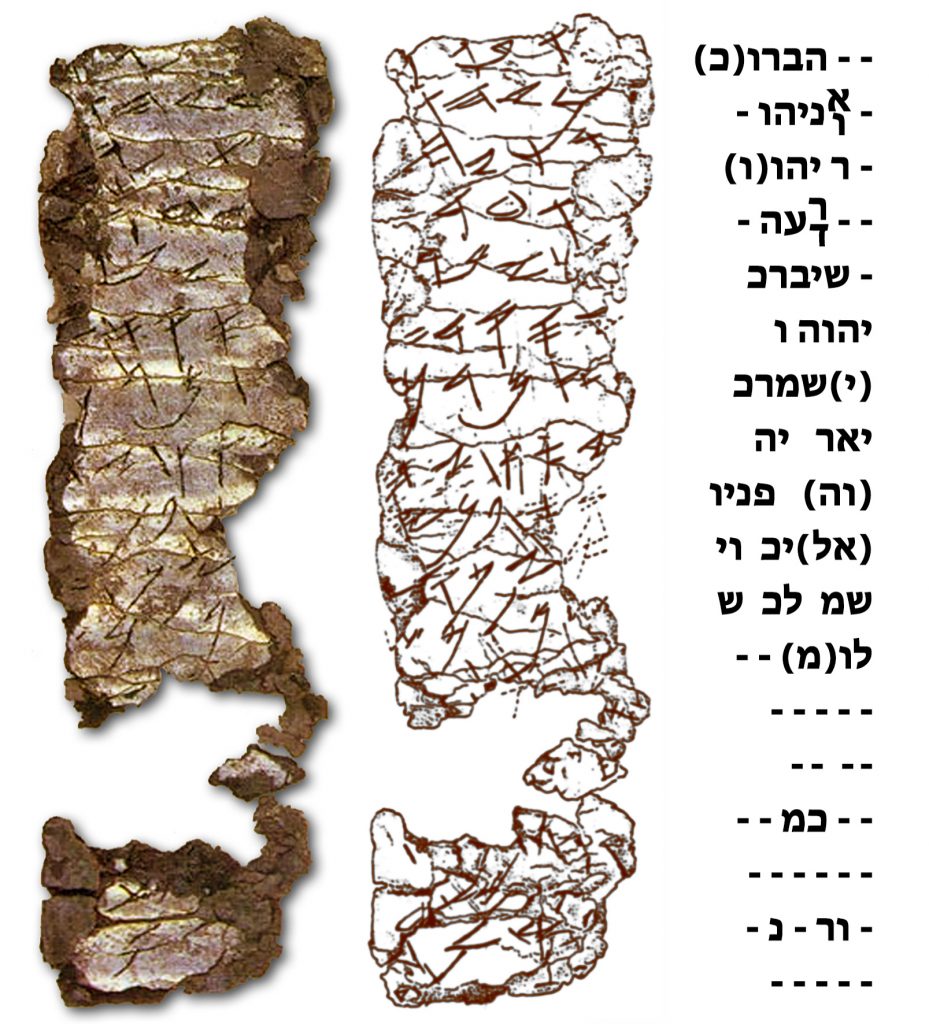
These two amulets were discovered in a cave near Jerusalem in 1979. They appear to be similar to the mezuzot that Jews, to this day, place on the frame of their front doors. The KH2 scroll is particularly close to a passage from the sixth chapter of the Book of Numbers. Notice the Paleo-Hebrew script. It looks very different from the modern Hebrew font on the right-side column.
Until the Dead Sea Scrolls were uncovered in caves between 1946-1956, there were no early biblical manuscripts that had survived into the modern era.* The majority of the Old Testament was written between 750-100 B.C.E., but the earliest manuscripts we have are in Greek from the 4th century C.E., copies that are at least 500 years later than when the originals were written. The oldest Hebrew manuscript of the entire Old Testament is from the 10th century C.E., another 400 years later!
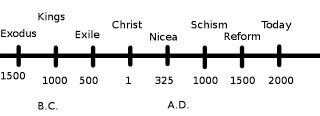
The problem with all these copies is that there are thousands of differences among the manuscripts, and that’s not even taking into account the dozens of languages (Hebrew, Aramaic, Greek, and Latin being the main ones). This is why I decided to create a spreadsheet of the major manuscripts organized by approximately 92 “books” of the Old and New Testaments. “Books” are in quotes because until the about the 2nd century C.E., biblical texts were usually written on papyrus (paper) scrolls instead of parchment (animal skin) bound into paged codices. And even if they were bound together in a codex, it was difficult to fit all of the books of the Bible into one.
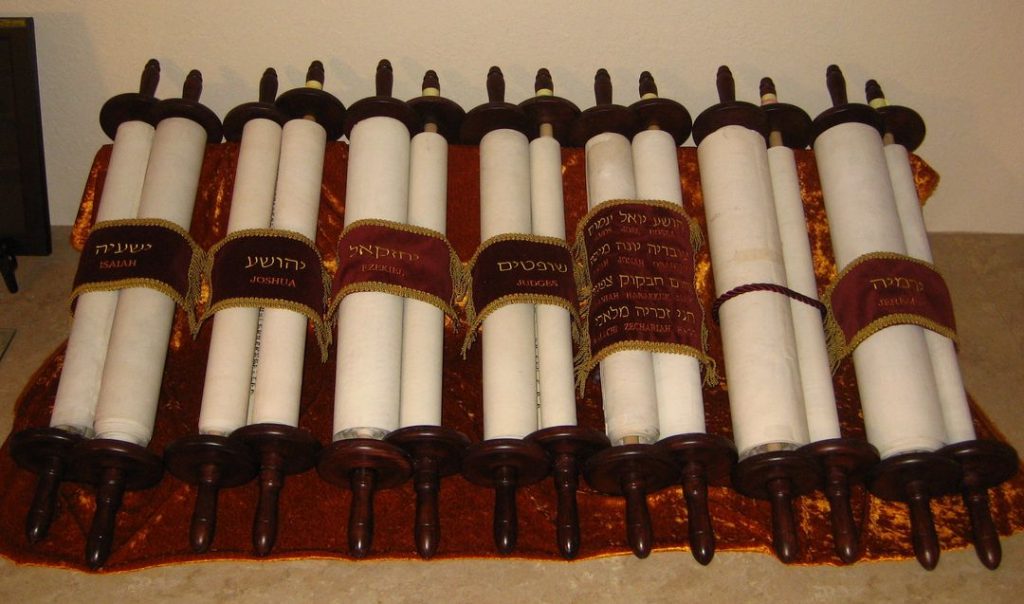
How were the books canonized?
Now that we have established some of the earliest manuscripts still in existence, let’s move on to the earliest “hypothetical” Bibles. I’m using the word “hypothetical” because there are no original collections of these Bibles, only various copies that allude to common sources. Undoubtedly, we can start with the Torah, later called the Pentateuch (“five scrolls”) by Hellenistic Jews. Moses is traditionally considered the author and the contents have remained largely unchanged since about 450 to 350 B.C.E. Originally written in Hebrew, the books in English are called Genesis, Exodus, Leviticus, Numbers, and Deuteronomy. After Deuteronomy, the history of canonization starts to get very complicated.
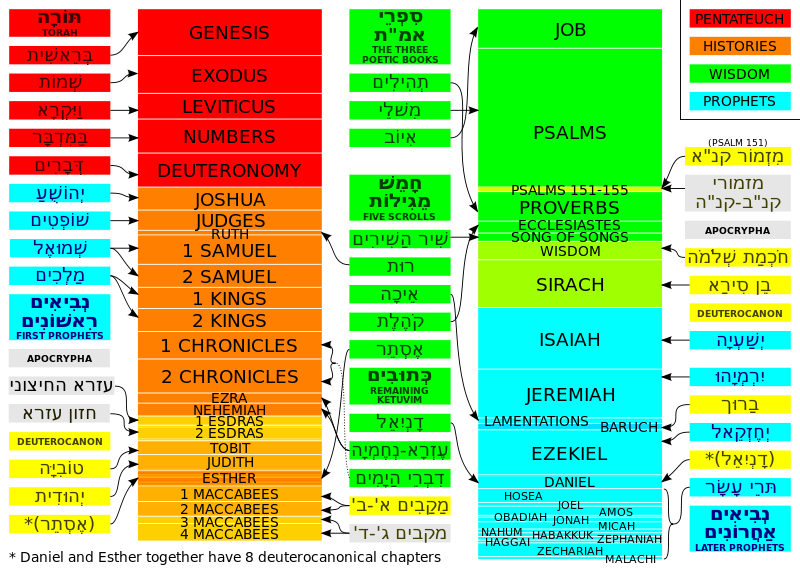
Take a look at the table of biblical canons on Wikipedia, which gives you a good idea of which books each tradition (Jewish, Catholic, Ethiopian, Protestant, etc.) considers canonical. This was the template for my own biblical manuscripts spreadsheet.
As I work through each of these “hypothetical” Bibles, keep in mind that they all have variants (books omitted, verses omitted, different names for God or people, pronoun usage, etc.). Jewish and Christian adherents are forever in search of the original words of the authors of biblical books. Since we don’t have any of the original transcripts, it’s a guessing game.
The Bible has many self-referential verses that tell us it is “pure” (Proverbs 30:5) and “God-breathed” (2 Timothy 3:16), so it is a crucial task for adherents to determine the original words and meaning. I remember being amazed by The Bible Code (1998) book when it came out, but now I understand the impossibility of coming across a perfect manuscript. Same goes for The Omega Code (1999) film. For more details about “textual criticism,” I found this overview from Faith Bible Church to be helpful.
Continuing on from the Torah, there are a number of highly-revered “hypothetical” Bibles, but the Masoretic Text and the Septuagint (LXX or Old Greek) have the closest resemblance to what we would consider the Old Testament now. Between the 7th and 10th centuries C.E., Jewish scholars called Masoretes produced a nearly-universal standard text of the 24 Hebrew books of Genesis through Malachi. They developed a system of transcribing this Bible through the ages and it is now referred to as the Masoretic Text (MT).
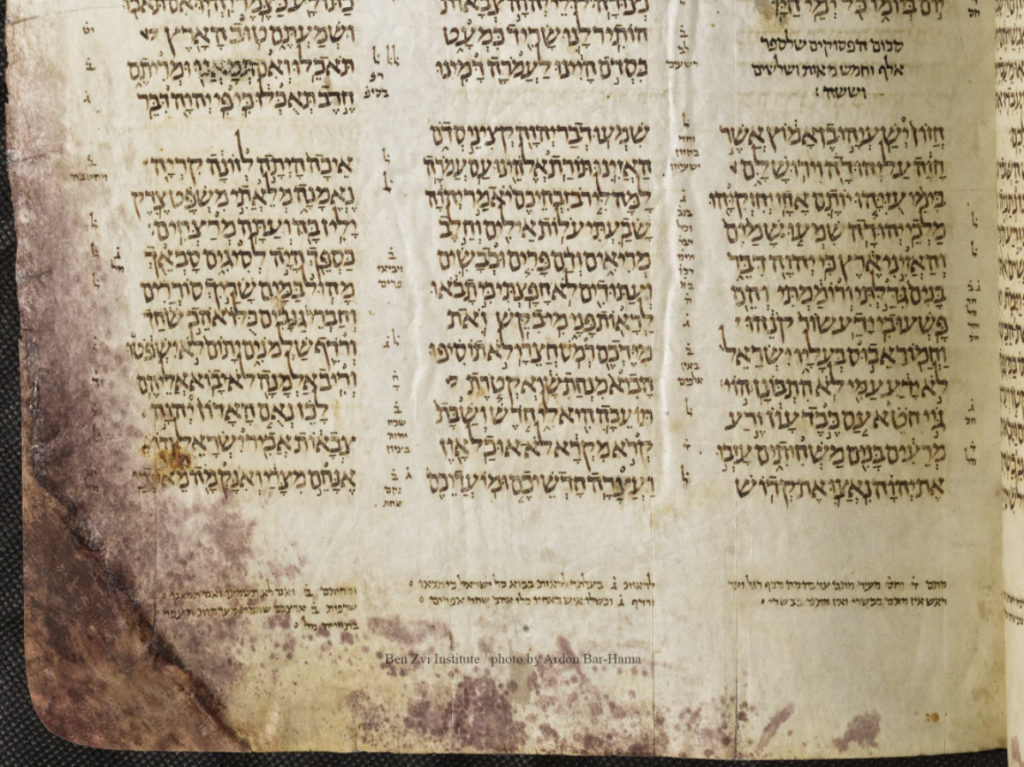
You can see from the sample above that the MT contains many notations, called “mesorah.” Compare to the same passage, below, from the much older Great Isaiah Dead Sea Scroll.
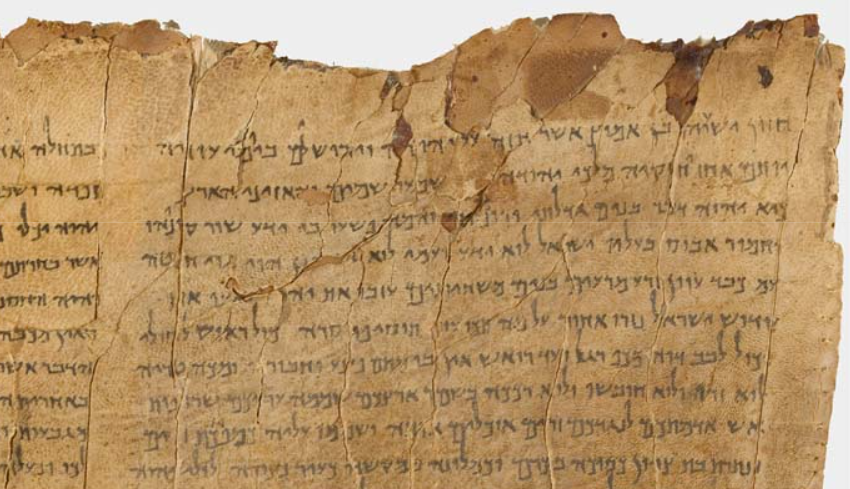
Besides the Masoretic Text, the Septuagint (LXX or Old Greek) is the other main Old Testament text that is highly-revered by religious scholars. Legend tells us that the Greek king of Egypt in the 3rd century B.C.E. commissioned a Bible to be produced in Koine Greek. This was a version that Hellenistic Jews could understand and read more easily than Hebrew.
The oldest surviving copies of the LXX (Codex Vaticanus and Codex Sinaiticus) were produced in the 4th century C.E. They are pictured below. Like many of the extant copies of the LXX, these codices contain extra books like Tobit, Judith and several others not found in the MT (see “apocrypha” below). Daniel and Esther are longer in the LXX and Jeremiah is longer in the MT, and there are many other variants. The Codex Sinaiticus Project is an impressive website with the fully-scanned text of the codex as well as notes and translations (in progress).
I’ve linked to BibleHub.com in some verses up above as I like the way it shows interlinear Greek and Hebrew literal translation into English, but BibleGateway.com is the most well known site for looking up Bible verses. BibleGateway can compare multiple modern Bible translations, up to five side-by-side, but it does not show many Hebrew translations, and there is no Old Testament in Greek on their website. Both websites are run by Christians and they both mention the Word of God as “infallible” in their statements of faith.
With that aside, below is an example screenshot of Isaiah 1 with the New American Standard Bible (NASB) on the left and Hebrew on the right. While I do not really have a preferred version of the Bible in English, I like the footnotes that the NASB includes on Bible Gateway. The website also has several audio Bibles.
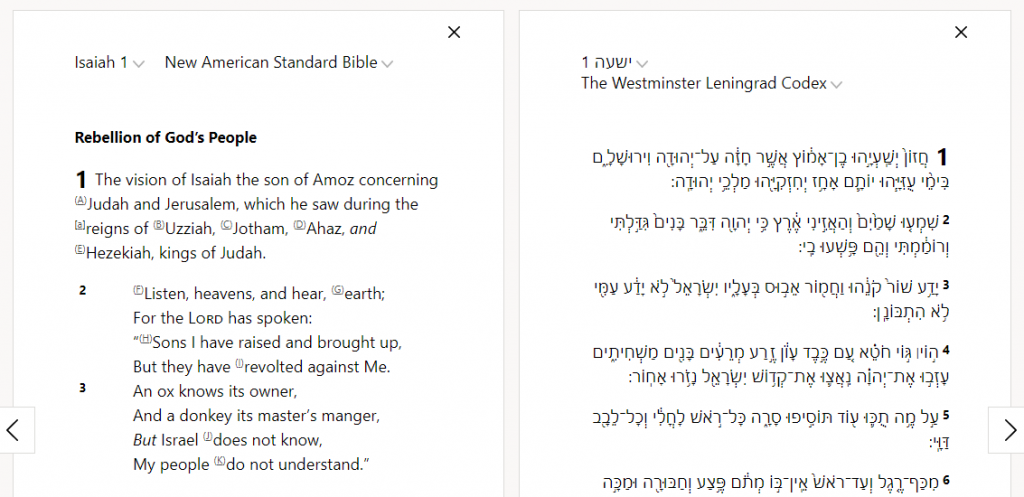
While there are many other “hypothetical” texts (such as the Old Latin, the Samaritan Pentateuch, the Syriac Peshitta, and the Ethiopian Bible written in Ge’ez), for the sake of brevity, I will wrap up—no pun intended—the Old Testament with the Dead Sea Scrolls (DSS). It is no exaggeration to say that their discovery between 1946-1956 has had more impact on biblical scholarship than anything before it.
They consist of thousands of fragments of texts written mostly in Hebrew (about 40% of the fragments) on parchment, from around 350 B.C.E. to 80 C.E. They were found in caves around the Dead Sea, mostly in Qumran, and contain by far the earliest evidence of nearly every book in the Old Testament (except Esther). About 30% of the DSS are “newer” biblical books like Tobit and Jubilees that did not make it into the Jewish Bible, but some are found in the Septuagint or canons of other denominations. These newer books are written in various languages. The remaining 30% of the DSS are sectarian works that shed light on the culture of the Qumran scribes.
Much can be said about the “newer” books in the DSS. They are part of a literature called apocrypha, intertestamental, deuterocanonical, pseudepigraphical, or several other names depending on the community. For our purposes, these are books that did not make the cut into the Hebrew Bible, nor the majority of English Protestant Bibles. Check out EarlyJewishWritings.com for the background and texts of most of these books. The New Revised Standard Version of the Bible is an example of a modern Bible that includes apocrypha. There are six other English Bible versions “with Apocrypha” listed on BibleGateway.com (CEB, DRA, GNT, NRSVA, RSV, & WYC).
It is believed a Jewish group called the Essenes hid the DSS in the caves during the destruction of Jerusalem ca. 70 C.E., and the scrolls remained there for over 1800 years. Since these are some of the only biblical manuscripts from this period, it is hard to say how mainstream the beliefs and biblical books of the Essenes were. Some of the DSS books are more similar to the MT, some to the LXX. There are no Christian manuscripts in the DSS…. Continue on to Part 3 for a peek into the New Testament, and the conclusion to “What is the Bible?”
Biblical canon manuscripts spreadsheet
Click on the Description tab of my “Biblical canon manuscripts.xlsx” spreadsheet for details about how it works.
* The Samaritan religion uses only the Pentateuch (first five books of the Bible) in their canon, and they claim that their Abisha Scroll was written by Moses’ great-nephew, Abishua around the year 1400 B.C.E., but scholarly evidence points to a more likely date of the 14th century C.E.
For reference, my spreadsheet lists 92 books. Old Testament & Apocrypha: Genesis, Exodus, Leviticus, Numbers, Deuteronomy, Joshua, Judges, Ruth, 1 Samuel, 2 Samuel, 1 Kings, 2 Kings, 1 Chronicles, 2 Chronicles, Prayer of Manasseh, Jubilees, Enoch, Ezra, Nehemiah, 1 Esdras, 2 Esdras, Tobit, Judith, Esther (primary), Esther (additions), 1 Maccabees, 2 Maccabees, 3 Maccabees, 4 Maccabees, 1 Maqabyan, 2 Maqabyan, 3 Maqabyan, Job, Psalms, Psalms 151-155, Proverbs, Ecclesiastes, Song of Songs, Wisdom (of Solomon), Sirach, Isaiah, Jeremiah, Lamentations, Baruch, Ezekiel, Daniel (primary), Daniel (additions), Hosea, Joel, Amos, Obadiah, Jonah, Micah, Nahum, Habakkuk, Zephaniah, Haggai, Zechariah, Malachi, Josippon. New Testament: Matthew, Mark, Luke, John, Acts, Romans, 1 Corinthians, 2 Corinthians, Galatians, Ephesians, Philippians, Colossians, 1 Thessalonians, 2 Thessalonians, 1 Timothy, 2 Timothy, Titus, Philemon, Hebrews, 1 Peter, 2 Peter, 1 John, 2 John, 3 John, James, Jude, Revelation. “Broader” New Testament Canon of the Ethiopian Orthodox Tewahedo Church: Sinodos, Covenant 1, Covenant 2, Ethiopic Clement, Ethiopic Didescalia.

